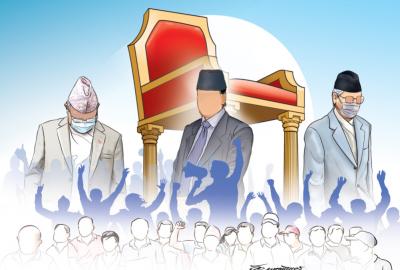Mar 21, 2017- Internet policies of developing countries have long dreamt of an inclusive internet that can bridge the proverbial digital divide and noticeably contribute to economic growth. The path towards realising this dream warrants broadband internet access to 45 percent of the Nepali households. This becomes probable when the entry-level home broadband connection is priced at less than 5 percent monthly income (ie, GNI per capita) of an individual. Broadband policy and Information and Communication Technology (ICT) policy envisage these to provide impetus for the sector to contribute 2.5 percent to GDP. The latest versions of the policies were drafted in 2015. A 45 percent broadband penetration rate is expected by 2018, with visible economic growth by 2020. These are the rates at which the necessary conditions translate to observable growth statistics. To understand the arguments, it suffices to equate broadband internet with ‘wide’ (bandwidth) and ‘fast’ connections.
Policy planning
Affordability of bandwidth is at the heart of broadband policy planning. In Nepal Rastra Bank’s fifth budget survey, the average income of households that fall in the richest 20 percent bracket is Rs53,578. This roughly equates to Rs11,906 per person. An entry level fibre broadband connection costs around Rs1,200 which is double the 5 percent affordability requirement. This cost is six times the affordability requirement for the poorest 20 percent bracket. What’s more, Rs1,200 is actually a low cost for advertised bandwidth and speed. Nepal has just above 1 percent broadband subscription.
Policies stipulate 512 Kbps (Kilo-bits per second) as the minimum download speed for a broadband internet connection. Interestingly, this minimum is the same in India, where the recent decision to classify 512 Kbps as broadband has been roundly criticised, with some labelling it “a joke”, “meagre”, “archaic and useless”, “out of touch with reality” and a “move back to the dark ages”. Such criticism comes due to the telecom regulators buckling under pressure from the telecom operators, which are also internet service providers (ISPs), for a U-turn on the original 2Mbps (Mega-bits per second) recommendation. The ISPs stated that without throttling, they cannot provide fast internet at an affordable price. Two options were suggested to the regulators: either set the minimum at 64 Kbps or allow unrestricted throttling. Regular home internet users would regard 64Kbps speed as a relic from the dial-up era. A crawling internet will also not contribute to the sustainable development goals (SDGs). The only realistic option on the table was to allow unrestricted throttling.
Throttling internet speed
Like their Indian counterpart, Nepali ISPs can throttle a fast internet speed as part of their ‘fair usage policy’ (FUP). Historically, the internet bandwidth was shared among six to eight subscribers. Sharing-ratios allowed ISPs to guarantee unlimited data volume. Upon the arrival of volume based packages (data cap), FUP mechanisms and tools such as throttling, sharing-ratio became an obsolete mechanism for bandwidth control. Throttling has been a thorny issue worldwide with frequent reports
of intentional throttling by the ISPs. Such measures raise questions on the nation’s net neutrality ambitions. A popular Nepali ISP defines ‘fair’ use: “Day to day surfing, checking emails and occasional downloading will not get you into trouble. However, downloading a 200-300 MB movie clip/data every day is almost certain to. The key is to keep an eye on the amount that you are downloading. Then if you’re classed as a heavy or excessive user, restructure your internet usage pattern so that you are not uploading or downloading at peak times. If you don’t heed their warnings, the system will slow down the speed of your connection after your data limit.” Worryingly, there is nothing a user can do about this.
Broadband internet and data cap with throttling is an oxymoron, considering high speed internet connection is being sold for high bandwidth applications. An internet user with a 10 Mbps connection will exhaust the 80 GB data cap after just 18 hours of usage. A four-hour per-day usage can extend access to this ‘fast’ internet for only five days, leaving 25 days for a buffered browsing experience. For some users, the data cap might seem to last longer. There are two likely explanations: ISPs give the promised 10 Mbps at certain time slots, the rest are throttled; or customers use the internet for low bandwidth applications such as browsing and VoIP (Viber/Skype).
There is no quick fix to the affordability conundrum. First, Nepali ISPs presently buy bandwidth from Indian ISPs at their dictated price. But as the Indian experience has recently shown, owning state of the art infrastructure in a competitive market does not necessarily translate into broadband affordability. Second, if affordability was to be defined in line with the meaningful use of the web, such as data usage of regular internet users, 512 Kbps is a ‘something is better than nothing’ target. Third, affordability demands a revision from the perspective of all income groups. Inclusive internet policies have to acknowledge the inequality in income distribution. Equipped with this new understanding, the entry-level broadband might have to be priced at 2 percent or less of the average monthly income.
Pandey is a researcher affiliated with Martin Chautari
Source: http://kathmandupost.ekantipur.com/news/2017-03-21/the-bandwidth-bottleneck.html










